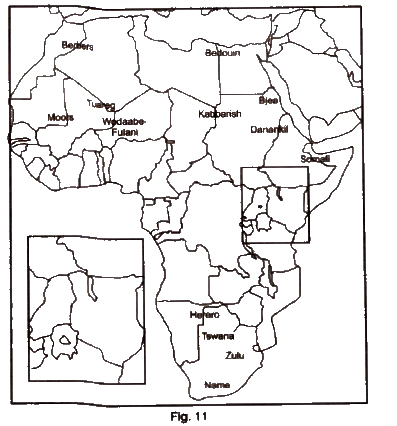...
Showing posts with label History (9th). Show all posts
Showing posts with label History (9th). Show all posts
Thursday, February 8, 2024
Tuesday, December 5, 2023
Chapter 1 The French Revolution
What were the main causes of the French Revolution?Answer:(i) Despotic rule of Louis XVI: He became the ruler of France in 1774. He had drained the financial resources of France in wars. For the cost of his extravagant expenses, he increased taxes which were paid by the third estate. (ii) Division...
Monday, December 4, 2023
Chapter 2 Socialism in Europe and the Russian Revolution
Textbook question answersQ 1. What were the social economic and political conditions in Russia before 1905?Ans: Economic condition:The vast majority of Russia’s people were agriculturists. About 85 percent of the Russian empire’s population earned their living from agriculture.Cultivators...
Sunday, December 3, 2023
Chapter 3 Nazism and the Rise of Hitler
Question 1. Write a one page history of Germany(a) as a schoolchild in Nazi Germany(b) as a Jewish survivor of a concentration camp(c) as a political opponent of the Nazi regime .Answer(a) As a Schoolchild in Nazi Germany I have been conditioned behave in a particular manner since I was three years...
Saturday, December 2, 2023
Chapter 4 Forest Society and Colonialism
Question 1. Have there been changes in forest areas where you live ?Find out what these changes are and why they have happened.AnswerThere can be a variety of answers. A sample answer is given belowThere have been a number of changes in forest areas in India since independence and some which have occurred...
Friday, December 1, 2023
Wednesday, May 3, 2023
Chapter 6 The Integration of Princely States: A Case Study of Jammu and Kashmir
Match the followingColumn AColumn BConstitution of Jammu and Kashmir6th October, 1947Instrument of AccessionMuzaffarabadAn area in Pakistan Occupied Jammu and Kashmir (PoJK)26th January, 1957
AnswersColumn AColumn BConstitution of Jammu and Kashmir26th January, 1957Instrument of Accession6th...
.png)
.jpeg)
.jpeg)
.png)
